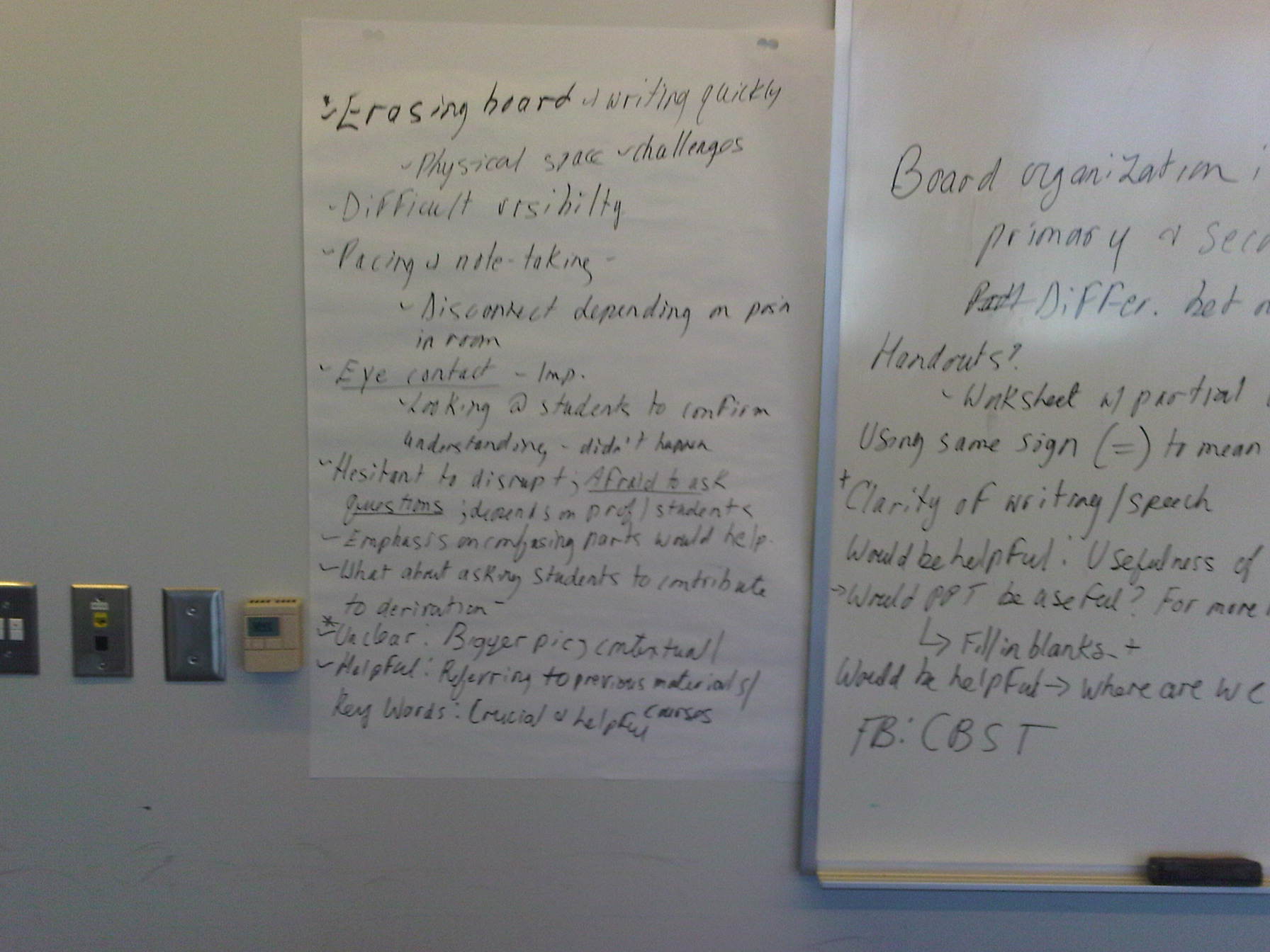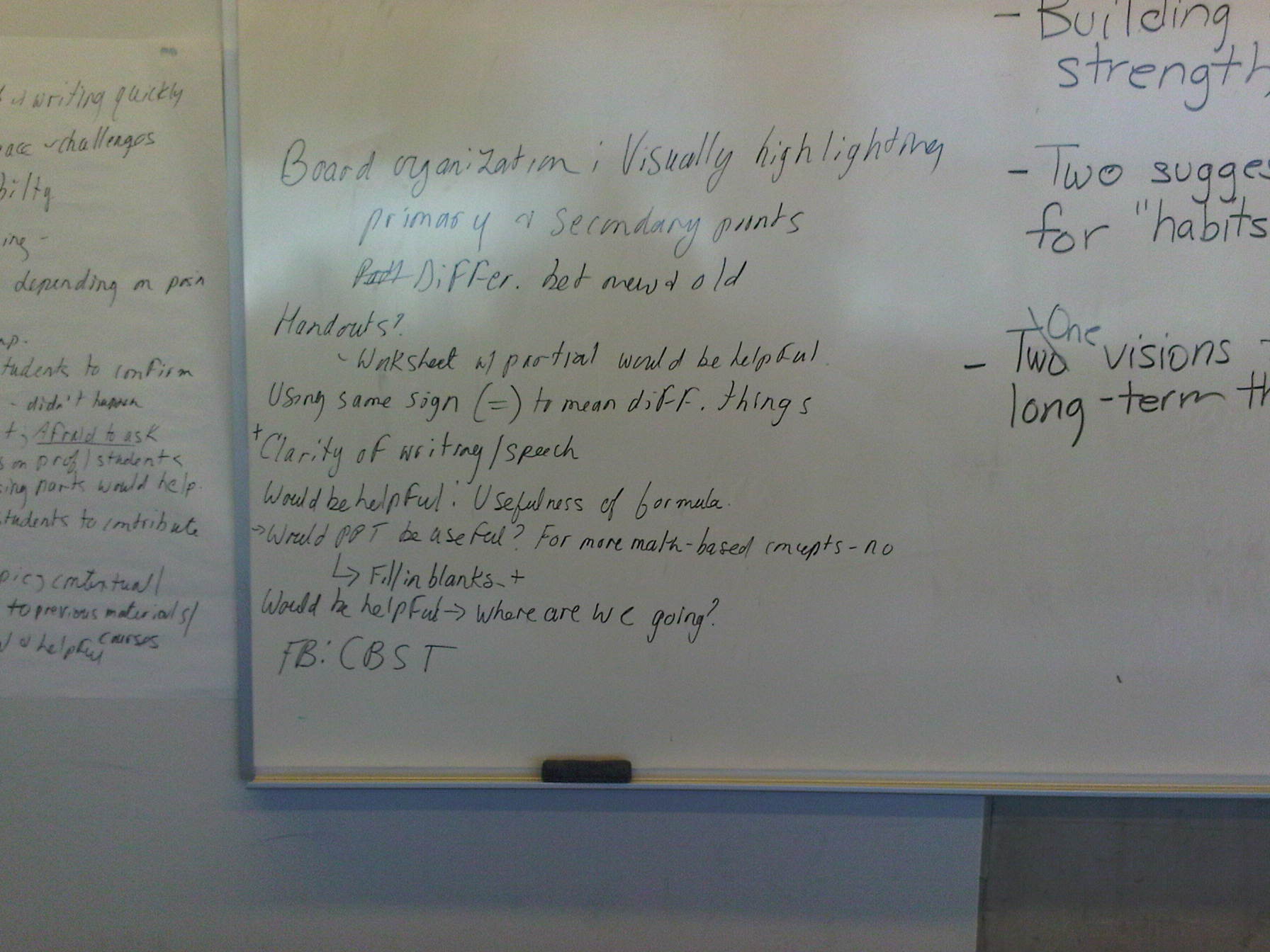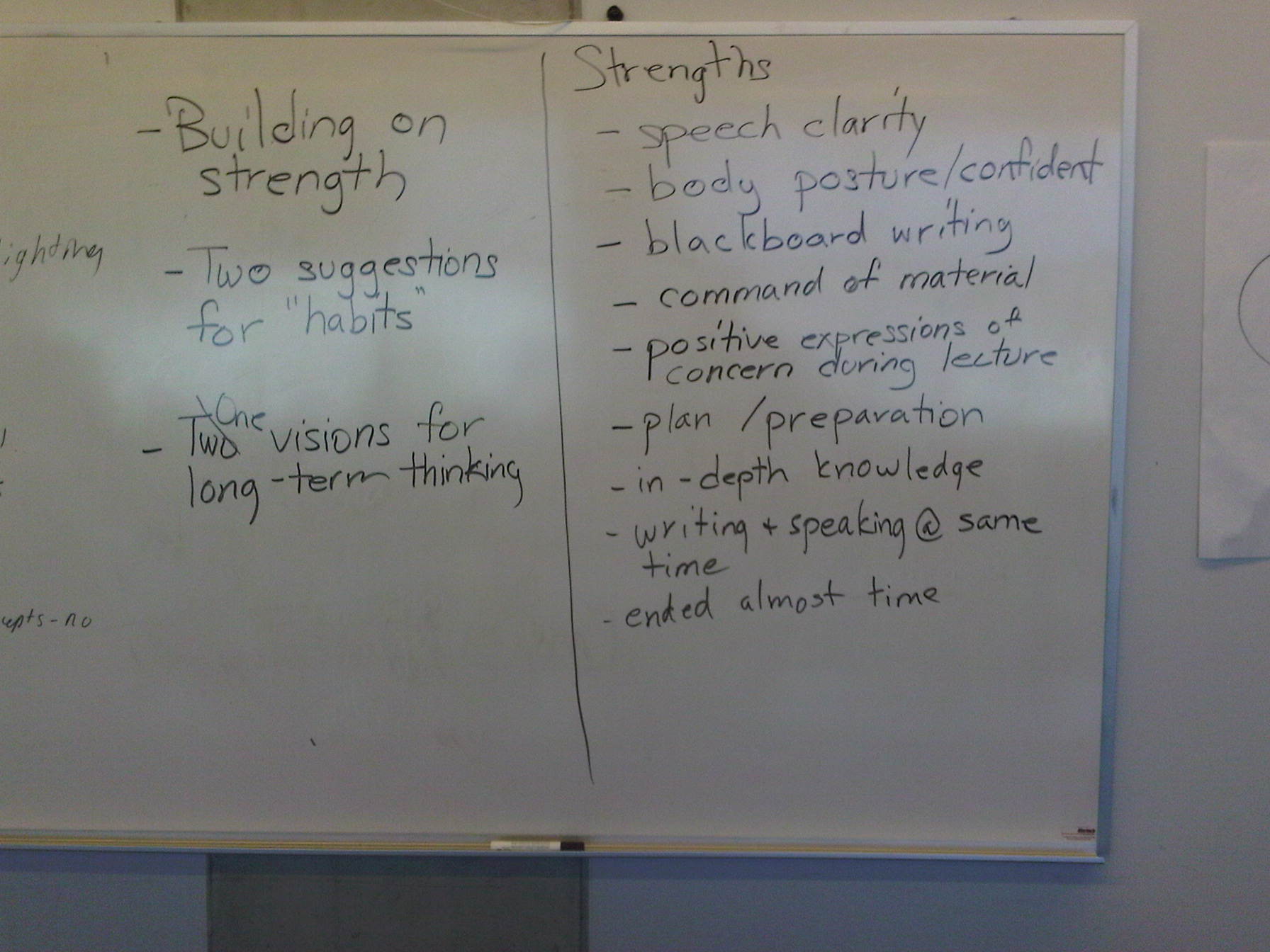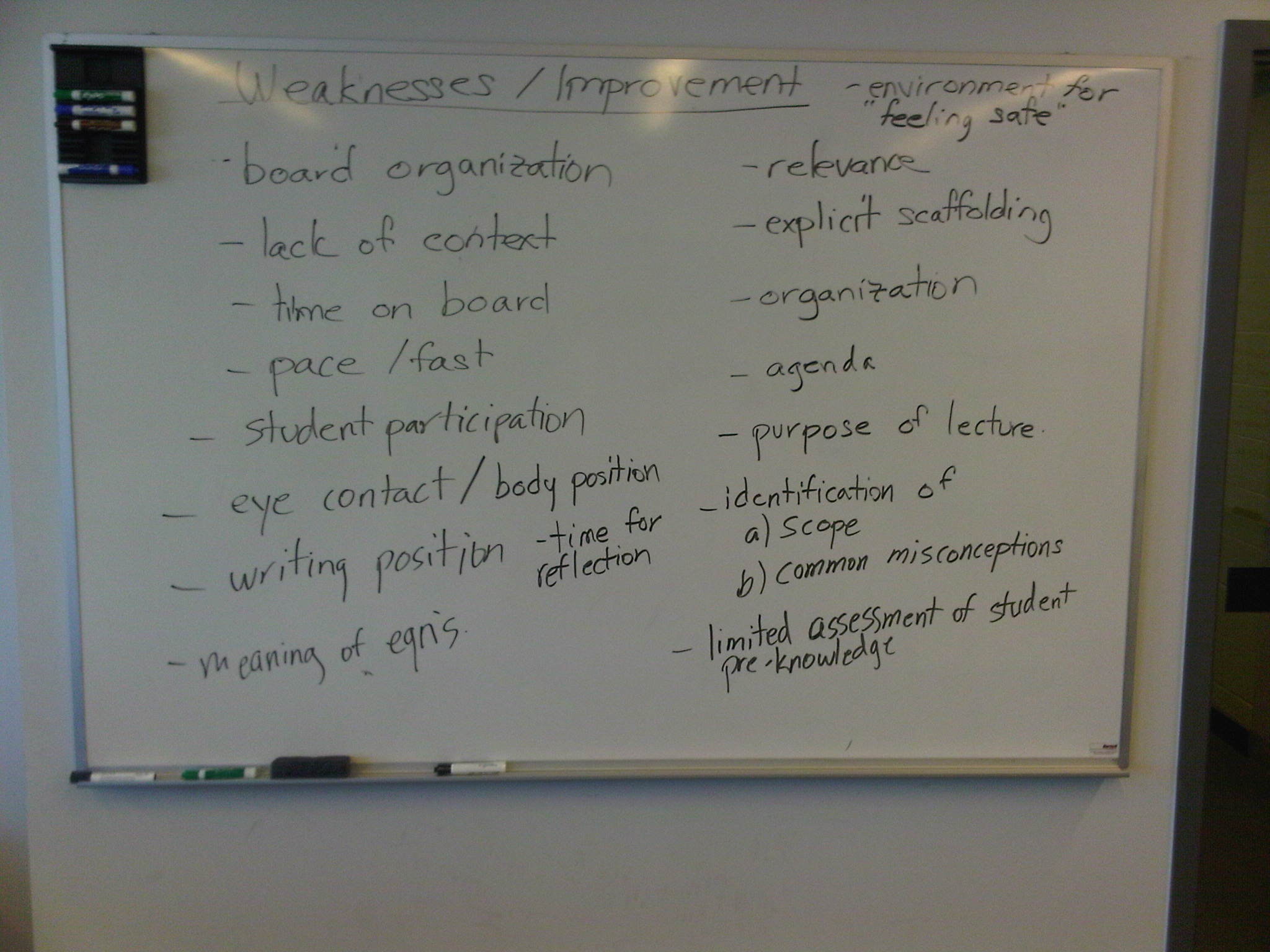
Brainstorming board one

Bullet points on a whiteboard that read: erasing board and writing quickly, physical space challenges, difficult visibility, pacing and notetaking, disconnect depending on position in room, eye contact, looking at students to confirm understanding didn’t happen, hesitant to disrupt, afraid to ask questions, depends on prof and students, emphasis on confusing parts would help, what about asking students to contribute to duration, if unclear use bigger pictures, helpful when referring to previous materials, and using keywords such as crucial and helpful.
Brainstorming board two

Bullet points on a whiteboard that read: board organization (visually highlighting primary and secondary points, different for new and old), hands outs like a worksheet with partial would be helpful, using same sign (=) to mean different things, clarity of writing and speech, would be helpful to explain usefulness of formula, would PowerPoint be useful? For more math-based concepts no (rather fill in-the-blanks), and would be helpful to explain where are we going.
Brainstorming board three

Bullet points on a whiteboard that read: building on strength, two suggestions for habits, and one vision for long-term thinking. Strengths include: speech clarity, body posture and confidence, blackboard writing, command of material, positive expressions of concern during lecture, plan and preparation, in-depth knowledge, writing and speaking at the same time, and ended almost on time.
Brainstorming board four

Bullet points on a whiteboard that read: board organization, lack of context, time on board, fast pace, student participation, eye contact and body position, writing position, time for reflection, meaning of equations, relevance, explicit scaffolding, organization, agenda, purpose of lecture, identification of scope and common misconceptions, and then limited assessment of student pre-knowledge.